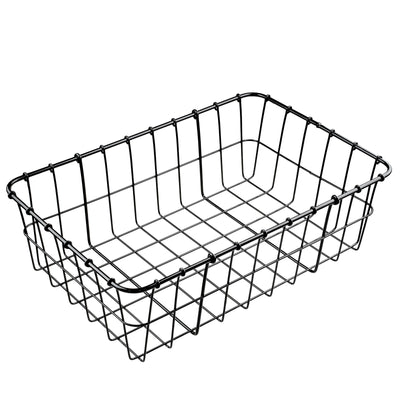This Is Why You Need Fenders - a Spray Analysis
Riding with full-coverage fenders can be transformational. You'll find your bike far more useful. You won't get a wet streak up your back every time you ride through a puddle. Your feet will no longer be soaking wet just because the road is damp. And you'll stay drier in anything but heavy rain. Additionally, people riding behind you will be happier because you aren't slinging road grime into their teeth.
Before we dive in, there are a few bits to notice while reading. I have added red arrows to represent the spray direction coming off the tires. Also notice the white dots of water seemingly hanging in the air. That is basically the water going up and then being captured in mid-air by the camera's shutter and sensor at 1/500sec. That is a good representation of water that will either go directly onto your back, your face, or into the face of the person riding behind you. The resolution of these photos should be good enough that you can zoom in for details. The bike is a Large Polyvalent Diamond with 650bx48mm tires being ridden at 10, 15, 20, and 25mph as tracked by the rider's smart watch.
Here is 10mph.
- There is noticeable spray in the direction of the bottom bracket, headset, rider's back, and the backside of the seattube.
- Your butt and lower back will start to get wet from water being directed upwards toward your body.
- Your shoes may get wet.
- There is a moderate amount of spray backwards, and riders behind may only get splashed if they are riding very closely.

Here is 15mph. This one may be the most important because research shows this speed is a very average riding speed for the average cyclist over 20-30 miles on flat ground.
- Notice the significantly increased spray in all of the previously mentioned directions.
- Your shoes are much more likely to be soaked during even a short ride.
- Here you are likely to spray yourself in the face and body from water coming off the top of the front tire.
- If you're riding behind this person, you will get blasted with water in the face.

Now we're at 20mph.
- You're wet.
- Everything is wet.
- You've lost your friends.
- Your drivetrain is sad and probably crunchy from road grime.

Finally, 25mph. Water being sprayed everywhere in every direction. I wonder how this would look on a knobby tire bike.

Now here is that same bike at 20mph, fitted with our 58mm Wavy Fenders and Mudflaps.
- Notice that the spray toward the bottom bracket and behind the rider is virtually eliminated and any spray toward the frame and fork is completely gone.
- There are a couple spots where water is harmlessly projected like in front of the tire towards the ground and just behind the bottom bracket.
- People riding behind you stay dry and happy.


One note: as much as I want for you to have fenders on every bike, if you ride on singletrack, muddy gravel, or use knobby tires, you want to skip fenders for safety. You don't want a stick or a clump of mud to get caught up in your fenders and cause a crash.
To sum up, undoubtedly, fenders are useful for so many applications including commuting, touring, randonneuring, and rail-trail riding. In addition to looking awesome (you'd be surprised how many fendersets we sell to people living in SoCal), they keep you, your bike, and your friends way drier. Even if you ride in a downpour where your body is going to be wet anyway, fenders are useful because they stop road grime, grease, and mud from ruining your clothes and cycling gear.
If you're interested in fitting fenders to your bike, we have a couple articles you can check out to make sure they'll fit: Fender Basics, Fenders on Disc Brake Bikes, and Re-Radiusing Fenders. And check out our fender selection on the webstore!






I live in Santa Barbara CA and rarely ride in the rain, but my experience is that fenders keep the bike cleaner even if it never gets wet.
The figures show clearly that your rear “fenders” are too short, as are your rear mudflaps. People riding behind the rider in the photos will not stay dry and happy — they will have muddy water all down their jackets and in their faces.
One, very minor, downside: I usually store my bikes by running the front tire up the wall to a hook while the back tire stays on the floor. In this case, the rear tire is now sitting on the rear fender/mudflap, if you can even get it there. That said, I no longer store my fender equipped touring bike standing up, for the foregoing reason, and for the fact that it has a kickstand. (Note: that touring bike rides with Crazy Bars.)
Fenders are awesome and allow you to ride in light rain/after rain wet roads and stay dry. But if you are on that 12 Mike commute or century ride on a steady rainy day, you will be soaked to the bone, shoes sloshing. Even with rain pants/jacket/shoe covers.
I rode my VO Rando with fenders and a milk- jug mudflap on a rainy century. The wettest I got was at the finish station, when I put my foot down in a big puddle!
I think they keep some of the road grit out of the works, even in the dry.
Love those fenders!
Leave a comment